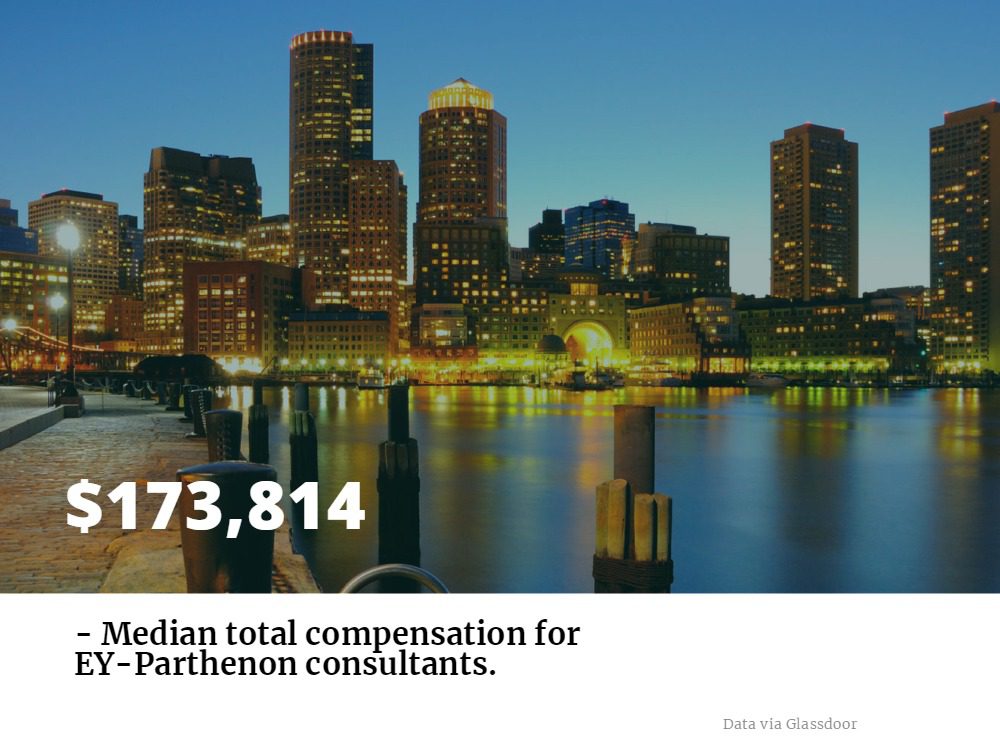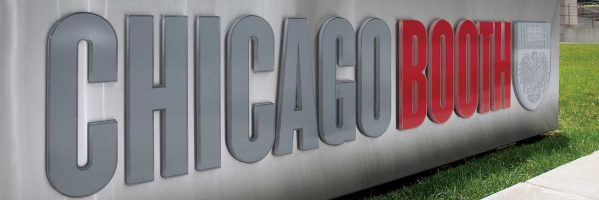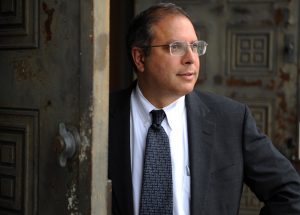Kings of the North: Should You Get a Part-Time MBA in Chicago or Toronto?

In many ways, Chicago and Toronto are very similar world class cities: Both are situated on a Great Lake, host an “Original Six” hockey team, and both metros suffer from “second city” inferiority complexes. Both metros also have plenty of competitive business school options for professionals who want to earn an MBA. Continue reading…
The Not-So-Secret Way To Land a Job at EY-Parthenon

After the hard work and sweat of earning an MBA degree, you’ve probably thrown yourself into searching for the perfect job to match your new found expertise. Luckily, some of the world’s top companies are also looking for you.
Companies like EY-Parthenon are always looking to recruit top MBA talent seeking careers in strategy consulting. A division of Boston-based EY (formerly Ernst & Young), one of the world’s top professional services firms, EY-Parthenon is a strategy consultancy which aims to combine innovative thinking with clients’ smarts to create actionable strategies that can cause a real impact in today’s business world.
MBAs Love EY-Parthenon
For MBA graduates looking for a career in strategy consulting, there are few places that can provide the unique combination of diverse clients and rewarding entrepreneurial work that EY-Parthenon offers. Comments from Parthenon’s MBA-holding consultants on why they love their job range from the incredible relationships they get to build with clients to the competitive benefits package they receive (including a night at the EY suite at Yankee Stadium).
“There is certainly an attitude in the New York office that we work hard but ensure that we find that balance necessary to enjoy the great benefits of working with wonderful colleagues in the best city in the world,” commented a graduate of NYU’s Stern School of Business and current Senior Consultant at EY-Parthenon.
For Adam, a graduate of the University of Chicago Booth School of Business and current Vice President at the Shanghai office of EY-Parthenon, working at the company has given him the opportunity to use his industry specific expertise to benefit a diverse set of clients.
“[A]t any given time, I may be leading a two-week diligence for a private equity client while also working on an eight-week corporate strategy engagement,” he says. “Having such a variety of engagements while still being able to be focused on very strategic work within a single sector practice is what I think sets EY-Parthenon apart.”
Life at EY Parthenon
As a consultant at EY-Parthenon, MBAs will play a critical leadership role in the company. Serving as the primary contact for clients, MBA graduates will have the chance to get their hands dirty right away, developing and executing work plans for a diverse client set. Consultants will use their knowledge of teamwork, leadership, analytics and communications to excel in the role.
The consultant career track at EY-Parthenon consists of various phases, beginning with work stream leadership—a focus on gaining the crucial analytical skills needed to best help clients—and ending with client management, the final stage before moving into a role as a partner or managing director. EY-Parthenon accelerates individuals through their careers and have no official timetable for new consultants outside of their own ambition and ability to take on responsibilities.
According to anonymous profiles on Glassdoor, consultants at EY-Parthenon make an average of $173,814 annually.

Landing The Job
Anyone can apply for a consultant role at EY-Parthenon, but the company also actively recruits at a number of undergraduate and graduate business schools. The MBA programs the company recruits from are spread throughout the world, and include some of the United States’ top programs, such as Harvard Business School, Kellogg School of Management, and the Stanford Graduate School of Business. The company also heavily recruits at international schools like INSEAD and the London Business School.
MBA students in their second year may apply directly for a full-time consultant role with the company, and first year students are eligible to apply for the summer consultant position. Any student attending a school that EY-Parthenon directly recruits from should check for the specific instructions on how to apply to these roles, typically through their university’s career services. The interview process for these schools typically takes place over two rounds, with the first round taking place on campus and second round interviews at the one of the various global Parthenon offices.
For more information on the company and job opportunities for current MBA students and graduates, check out the official EY-Parthenon MBA job page.
Chicago Booth Professor Anil Kashyap Honored By Japanese Government

Last month, University of Chicago Booth School of Business professor Anil Kashyap received the Order of the Rising Sun, Gold Rays with Neck Ribbon award by the Japanese government. This prestigious award honors the renowned economist’s distinguished achievements and contributions to Japan.
Kashyap was honored for the significant role he played in promoting and disseminating high quality research on the Japanese financial system and economic policies. According to the school, he coordinated conferences bringing together Japanese and American researchers in partnership with the Economic and Social Research Institute, the think-tank under the Cabinet Office of Japan.
“It has been an honor and a privilege to work with the Cabinet office on these conferences. They have generated many good research papers, forged some collaborations and hopefully have helped with the policy process,” Kashyap said after receiving the award.
The Order of the Rising Sun was originally established in 1875 by Japanese Emperor Meiji as the first national decoration awarded by the Japanese government. However, a modern version has been awarded to non-Japanese recipients since 1981.
Today the award honors individuals who have made significant contributions to international relations, promotion of Japanese culture, advancements in their field, development in welfare, as well as preservation of the environment. Kashyap was among 149 foreign recipients of the award this year.

Anil Kashyap/Photo via Chicago Booth
Prior to joining the Chicago Booth faculty in 1991, Kashyap spent three years as an economist for the Board of Governors for the Federal Reserve System. In addition to his exploits in Japan, he is on the Board of Directors of the Bank of Italy’s Einuadi Institute of Economics and Finance, is a member of the Squam Lake Group, and serves on the International Monetary Fund’s Advisory Group on the development of a macro-prudential policy framework. Since 2016 he has been an external member of the Bank of England’s Financial Policy Committee.
Kashyap is currently the Edward Eagle Brown Professor of Economics and Finance at Chicago Booth. His research has won him numerous other awards, including a Sloan Research Fellowship, the Nikkei Prize for Excellent Books in Economic Sciences, and a Senior Houblon-Norman Fellowship from the Bank of England.
Kashyap also currently works as a consultant for the Federal Reserve Bank of Chicago, and serves as a member of the Economic Advisory Panel of the Federal Reserve Bank of New York, and as a Research Associate for the National Bureau of Economic Research.
Admissions Tip: The Waitlist

Last week was marked by Round 1 decision releases from a couple of the schools covered on MetroMBA and Clear Admit, and in the coming weeks, many of the remaining schools are scheduled to release R1 decisions. Clear Admit’s MBA LiveWire has captured a lot of this news, including quite a few candidates recently reporting that they’ve been waitlisted at places like London Business School and INSEAD.
For better or for worse, waitlisting is rather popular with top schools in the first round of admissions. As such, we’re devoting this week’s admissions tip to guidance for candidates who find themselves placed on a waitlist. Before we get to that, let’s look first at why schools use a waitlist.
Why Schools Use the Waitlist
First and foremost, while schools now know the quality of their Round 1 pool, they don’t yet know how strong the remainder of their applicants for this admissions season will prove, nor can they predict how many of the candidates admitted as part of Round 1 will ultimately enroll. Simply put, the waitlist helps schools manage these unknowns to arrive at the strongest possible class come fall. Some schools will “under admit” Round 1 candidates in case there is a flood of quality applicants in Round 2 or a higher yield of Round 1 candidates than predicted. The goal of the school is, after all, to admit the best overall class, regardless of when someone applies. They also do not want to over admit during an early round, which will limit their opportunities to admit strong candidates later, thus the push to “under admit,” and place significant quantities of candidates on the waitlist who may very well gain admission in later rounds. Chicago Booth explains this well on their web-site:
“The waitlist at Chicago Booth is used to gauge the pool of candidates in a subsequent round before offering a final decision to those candidates placed on the waitlist.”
Schools also can learn, by placing a candidate on the waitlist, how committed he or she is to attending the school. There is signal value in how a candidate responds to the waitlist decision. Some candidates placed on a waitlist receive offers at other schools they would prefer to attend, in which case they will opt out. Others remain convinced that the school that has waitlisted them is their best choice and will hold out to see if they can ultimately gain admission.
As well, if you are waitlisted, we’ve outlined some more advice we feel will help you on the way to earning an MBA.
Five Tips for Making the Best of the Waitlist
If you find yourself on the waitlist, don’t lose hope. Top programs admit a fair number of individuals from the waitlist in Round 2 and even later. That said, we know that cautious optimism does not make the wait for an answer any easier. To help those in this situation make sure that they’re doing all they can, we do have a few strategic waitlist tips:
Know—and follow—the rules.
Schools vary in their stances when it comes to interaction with those on the waitlist; some shun communication from applicants and even go so far as to discourage on-the-record campus visits, whereas others welcome correspondence and assign an admissions office liaison to serve the needs of waitlisted candidates.
We know that the natural impulse is to update the adcom that recent promotion or the final grade from that accounting class you took to bolster your academic profile. At first blush, a short letter or quick call to communicate this kind of update might seem harmless. But no matter how exciting the piece of news you want to share may be, ignoring the adcom’s instructions is ultimately going to reflect badly on you. Though policies discouraging communication from waitlisted candidates may seem frustrating or unfair, it’s important to respect and abide by the preferences of each school.
Communicate if you can.
For those programs that do permit or encourage contact from waitlisters—Booth, for example, has traditionally invited waitlisted candidates to submit an additional 300-word essay—it is important to provide an update. In addition to the obvious news items mentioned above, it’s beneficial to read over your essays and reflect on whether there is some piece of your background or interests that you haven’t gotten across yet. Taking the time to write about your relevant recent experiences, positive developments in your candidacy and ways that you’ve enhanced your understanding of the program is a nice sign of your interest in the school and a good strategy for telegraphing your commitment to attending. It is, of course, also in your interest to make sure that the adcom has the most up-to-date information so that it can make an informed decision the next time your file comes up for evaluation.
Keep in touch.
Don’t disappear after an initial note to the adcom or phone call to your waitlist manager (if applicable). If you have plans to be on or near campus, for instance, send a quick email to alert your waitlist manager (or whoever you may have interacted with on the adcom) to this fact. In many cases, you’ll find that the adcom will even invite you to stop by for a friendly chat about your candidacy—something that can go a long way towards helping your case. Beyond a visit, sending a brief update every few weeks or so is another way to reaffirm your interest in the school and keep you fresh in the minds of the adcom—something that could work to your advantage in a discussion of which candidates to admit from the waitlist. In all cases, it is important to remember that there is a fine line between persistence and pestering, so use good judgment!
Letters of support.
If, during the admissions process, you have interacted with students or alumni of the program, it may be worth reaching back out to these individuals and updating them on your status. Assuming you have made a positive impression during the admissions cycle, they may be willing to provide an additional letter of support for your candidacy at this stage of the process.
Have a contingency plan.
While it’s important to be consistent and enthusiastic when waitlisted and communicate with staff at your target program, it’s also wise to have a backup plan. With the Round 2 deadlines for several top programs a little over a month away, there’s still time to put together a solid application to another school. Even if you’re waitlisted at the school of your dreams and intend to reapply if not admitted, it’s also never too early to start thinking about the coming year and what steps you might take to enhance your candidacy before next fall.
Good luck to everyone waiting to receive decisions over the next few weeks!
This article has been edited and republished with permissions from Clear Admit.
Five Chicago Booth MBAs Named Siebel Scholars, One Named McGowan Fellow

The University of Chicago recently announced it’s Siebel Scholars and McGowan Fellow for 2018, with five MBA students from the Booth School of Business being recognized for their academic achievement and leadership, and awarded scholarship money for their efforts.
Darrick Chan, Kathleen Davis, Monica Kalwani, Igo Shkilko, and Yihan Tan make up this year’s group of Booth Siebel Scholars. Each second-year MBA student received $35,000 each toward their final year of MBA tuition.
Siebel Scholars are nominated their schools deans for their academic excellence, and leadership in the fields of business, computer science, bioengineering, and energy science. Established in 2000, the Siebel Foundation presents grants to more than 90 graduate students from 16 universities in the United States, China, France, Italy, and Japan. On average, Siebel Scholars rank in the top 5 percent of their class, and many rank within the top 1 percent.
Meanwhile, Pedro Amoroso Lima was named Chicago Booth’s McGowan Fellow for 2018 thanks to his commitment to ethical leadership. Lima is one of 10 McGowan Fellows nationwide this year. These students will work together on a social impact project that will tackle a particular challenge.
Established in 2010 by the William G. McGowan Charitable Fund, a Chicago-based family foundation, the McGowan Fellows program awards full-year tuition to select students. The program aims to provide the resources and guidance to young professionals to become ethical, accountable leaders and role models for generations to come.
These are not the only scholarship and fellowship opportunities for Chicago Booth full-time MBAs. Full and partial tuition is awarded through merit-based awards, Chicago Booth Fellowships, and Corporate Fellowships. Merit-based awards do not require a formal application beyond the normal process of applying to Booth.
Like the merit-based awards, the 15 different Chicago Booth Fellowships have no formal application process, although interested Booth applicants are encouraged to contact the Office of Admissions (7773.702.7396) for more information. Fellowships are awarded under the categories of: Academic, Diversity, Industry, Leadership, Military, Regional, and the Yellow Ribbon Program.
How To Avoid Costly MBA Résumé Mistakes

Submitting a résumé is perhaps the most crucial part of every prospective MBA’s application process. A good résumé provides insight into who an applicant is, and what they’ve accomplished. A well-crafted, attention-grabbing résumé that captivates an admissions team can bring an applicant much closer to an acceptance letter.
But aside from a name, contact info, and educational and professional details, what should a slam-dunk MBA resume include?
What Are The Résumé Basics?
Starting with the principle basics, résumés should be short, sweet, and concise. Ideally, they should fit on one page—maybe two. Stephan Kolodiy, an admissions officer at Rutgers University, told U.S. News & World Report that long résumés are a common issue with many MBA applicants.
“Sometime we get a résumé that’s five to six pages long, and that’s way too much information,” he says.
That one-to-two pages of concise information should also be 100 percent accurate—one should never lie on a résumé. Because credibility plays a big role in the application process (MBA or otherwise), it is unwise to fabricate work or school experience. Deceitful, even exaggerated, résumés are always rejected by business schools, and admitted students who submit compromised résumés are at risk for expulsion. This is serious stuff, so don’t lie!
Carrie Marcinkevage, MBA Managing Director at the Smeal College of Business at Penn State University, told U.S. News that honesty is always the best policy.
“Authenticity allows you to find the right school and that school to find you,” Marcinkevage says. “Allow them the chance to find the real you.”
Perhaps most importantly, all MBA résumés should provide examples of success. Prospective MBAs should give admissions officers a reason to send an acceptance letter by showing concrete examples of career advancement, or of how an MBA candidate achieved results for a particular client.
“When applying to a top-tier business school, you’ll need to show admissions committee on a clear path of professional growth,” U.S. News reports.
What Are You Forgetting?
There are also some not-so-basic guidelines that MBAs are encouraged to follow when crafting a solid résumé. Investopedia published a guide reviewing some of the best resumes for MBA applicants that outlines a few tips that many prospective business students may not have previously thought of.
Without sounding like too much of a graphic design nerd, it’s important to take typeface into account with a résumé. Yes, fonts matter. It’s best practice to rely on on two typefaces: A bold sans-serif face for headers, and a standard serif face for body type. For those of you who don’t know, a serif is the tiny extension on the termination point of an individual letter, the little “hat” at the end of a letter if you will.
Serifs exist to make smaller text easier to read, so they are the best friend of admissions offices who may read hundreds of résumés per day. Sans-serif fonts—letters that don’t include serifs—are cleaner and pop easier when bolded out. Résumés should avoid using fonts that are too common, such as Times New Roman, but also avoid ridiculous fonts like Comic Sans. Nobody likes Comic Sans.
Aside from listing relevant work experience, and showing how much growth took place at each job, there are other skills that every résumé should highlight. According to U.S. News, the three skills that can best help sell an MBA applicants résumé to a business school are:
-
- Leadership
- Communication
- Innovation
First and foremost, business schools want to see strong leadership skills as well as personal growth. All MBA programs focus on developing management skills, but schools wants to know that a solid foundation of leadership is already there. Good résumés provide evidence of an applicant motivating a team behind a common goal, figuring out the best use of other’s talents and skills, instilling a concrete vision, and prioritizing the needs of an organization above personal needs.
As for communication, a résumé is an applicant’s first line of communication to a business school, and should be chock-full of structured writing and thought-out word choice. U.S. News shows the different between a boring resume and beautifully worded one:
“Here’s a real example of a blah bullet point in a client’s first draft: ‘Helped with new software implementation.’
Now, a brilliant bullet point: ”Spearheaded software upgrade in the San Francisco field office by coordinating with software developer, leading training sessions, and facilitating implementation schedule.’ The second example offers a much more comprehensive understanding of the scope of the accomplishment.”
Some applicants may try to hard to impress admissions officers with technical jargon or fancy terminology. Lose it, and show that you can clearly, and simply explain headier topics in writing:
“One client listed this bullet point on his resume: ‘Created VA1 Business Acquisition.’
Once we translated that into something the MBA admissions audience would understand, the résumé said: ‘Devised and launched outbound communications plan for our premier voice activated product. Product was well received and became cash flow positive within 14 months.’
Much better.”
Lastly, a résumé that shows an applicant has helped innovate will go a long way. This piece of advice is especially handy for applicants with traditional pre-MBA jobs. All admissions officers know what a consultant or analyst is tasked with at an entry-level position. A resume is an opportunity to shed light on things that sets an applicant apart from other typical analysts. Things to keep in mind include: training a newly hired analyst, leading college recruiting efforts, or organizing an office volunteering or fundraising initiative.
Avoiding Deceptive Mistakes
Now, here’s where we can get a little dramatic: Résumés are the first impressions a prospective MBA job candidates has with a potential employer. Since no one gets a second chance to make that first impression, don’t mess it up!
Bloomberg issued a list of the “Ten Biggest Resume Blunders” that outlines exactly what not to do with an application résumé, which includes obvious items like avoid writing a bad cover letter and remove foolish typos and inconsistencies.
The list also features some gems, like how to avoid making your résumé a cluttered mess. Again, not to sound like a graphic design professor, but the look of a résumé certainly counts. Avoid using fancy graphics or designs, and provide a crisp, clean document that’s easy to read on a computer screen.
“The résumé should be presentable, not an information dump,” Chris Thomas, Global Recruiting Director of the Experienced Commercial Leadership Program at General Electric, told Bloomberg. “There should be some white space.”
A well-done résumé shouldn’t misfire on any points—bullet points, that is. Some schools offer formats for resumes, specifically on how to list past job experience. Schools like the University of Michigan Ross School of Business advise students to use the “Action Context Result” format, which describes an action they performed, where they performed it, and the results it garnered.
“‘Worked for XYZ Corp., 2008 to 2012’ says close to nothing,” Damian Zikakis, Director of Career Services at Ross, told Bloomberg. “’Led a review of supplier contracts for the technology division resulting in savings of $250,000 opens doors.”
Lastly, a résumé should never disregard an applicant’s worth, nor should it overshare information. As we mentioned earlier in this piece, a good résumé should demonstrate what an applicant has accomplished and what they can bring to a new employer. It should not feature information that, even if positive, is irrelevant to a desired position.
“Think of the résumé as a future-focused document and not an historical one,” Char Bennington, Director of Career Management at the University of Chicago’s Booth School of Business, told Bloomberg. “Focus on what’s important to the people in the career that you want now.”
How Else Can Your Résumé Stand Out?
To help make sure a résumé stands out in the crowd, consider participating in some relevant volunteer work. David D. Schein, the Director of Graduate Programs for the Cameron School of Business at the University of St. Thomas, told MetroMBA that adding volunteer work to a résumé. With that said, not all volunteer work is equal.
For example, if you volunteer at the SPCA and play with puppies all day, that probably won’t your résumé or your application. Instead, find “responsible positions that deliver a lot of bang for the time commitment,” Schein says. Find a position that will allow you to spend time organizing a major fund-raising activity or event. It should be something that has a demonstrative impact on the organization and illustrates your leadership potential.
Including unique and interesting hobbies can also be a fun way to illustrate your skills and stand out. Schein recommends that applicants choose hobbies that “demonstrate drive and ambition. Some examples might include white water rafting or learning a difficult foreign language like Chinese or Farsi.”
